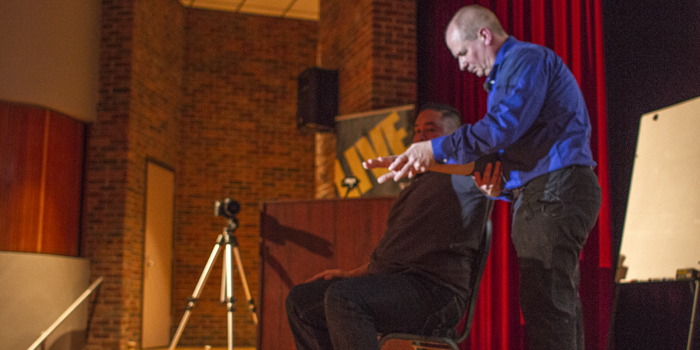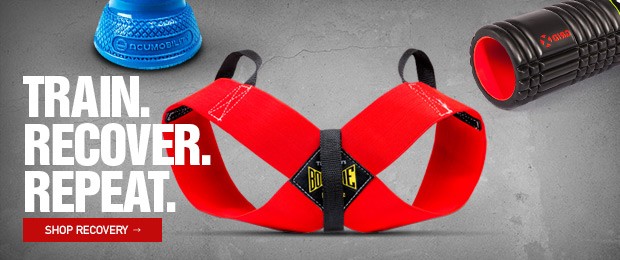
In the first two parts of his 2017 elitefts SPS Presentation, Dr. Kinakin focused on pain when pressing forward and the common shoulder injuries associated with the barbell bench press. Just as common as pain during the barbell bench press, however, is pain when overhead pressing. In this third video, the final part of his presentation, Dr. Kinakin dives into the many causes and possible treatment options for pain in the overhead press.
First showing the anatomy of the shoulder, Dr. Kinakin suggests every athlete do a test: with your thumb up, palm forward, attempt to bring your arm upward and touch your bicep to your head. If you struggle to accomplish this, the infraspinatus is often the problem and will also cause issues with pressing. To explore this possibility, Dr. Kinakin demonstrates the infraspinatus muscle test with an attendee, treating for when there is tightness but no pain (which Dr. Kinakin says is called a dysfunction).
WATCH: Dr. Ken Kinakin SPS Presentation — Subscapularis Strain and Testing
Additionally, Dr. Kinakin works with Brandon Smitley on an internal and external rotation issue that resulted from a back tweak suffered when squatting. Altering Brandon's position to explore the issue, he shows how being under axial load can reveal issues that can then be further explored in a lying or supine position.
To understand how to apply these techniques, Dr. Kinakin emphasizes the importance of diagnostic skills. For instance, if you have a 300-pound, five-foot-two-inch, 40-year-old female client, your time is likely better spent improving her level of fitness than doing fascial stretching. In other words, knowing these techniques is an important step in improving yourself or your athletes, but knowing when to implement them is equally important.
In diagnosing your athletes, you must pay close attention to patterns in their movements and behavior. Dr. Kinakin tells the story of watching the Boston Marathon and how it is possible to correctly predict the winner of a competition by their stride. Once they begin moving side-to-side in their running, it is a clear indicator that fatigue has set in. Those who haven't yet fallen into that movement pattern are likely able to make a late-run push and take a lead.
Again testing on an attendee, Dr. Kinakin breaks down the topic of AC joint sprains. Often manifesting in incline pressing movements, you can identify the cause of AC joint issues by putting the athlete in positions that utilize the AC joint differently. Dr. Kinakin shows how to test for these types of sprains in the AC joint and how to manage them yourself when you don't have access to professional treatment.
By the minute:
- (0:23) Pain with pressing overhead
- (2:44) Infraspinatus muscle test
- (6:21) Internal/external rotation challenges
- (9:33) Axial load vs. supine positioning
- (12:58) Diagnostic skills
- (15:00) Ryan Leaf, running, and the Boston Marathon
- (19:22) AC joint sprains and separation treatment
- (23:20) Testing for AC joint sprains
- (26:04) Rehabilitation, chiropractor care, and coffee









